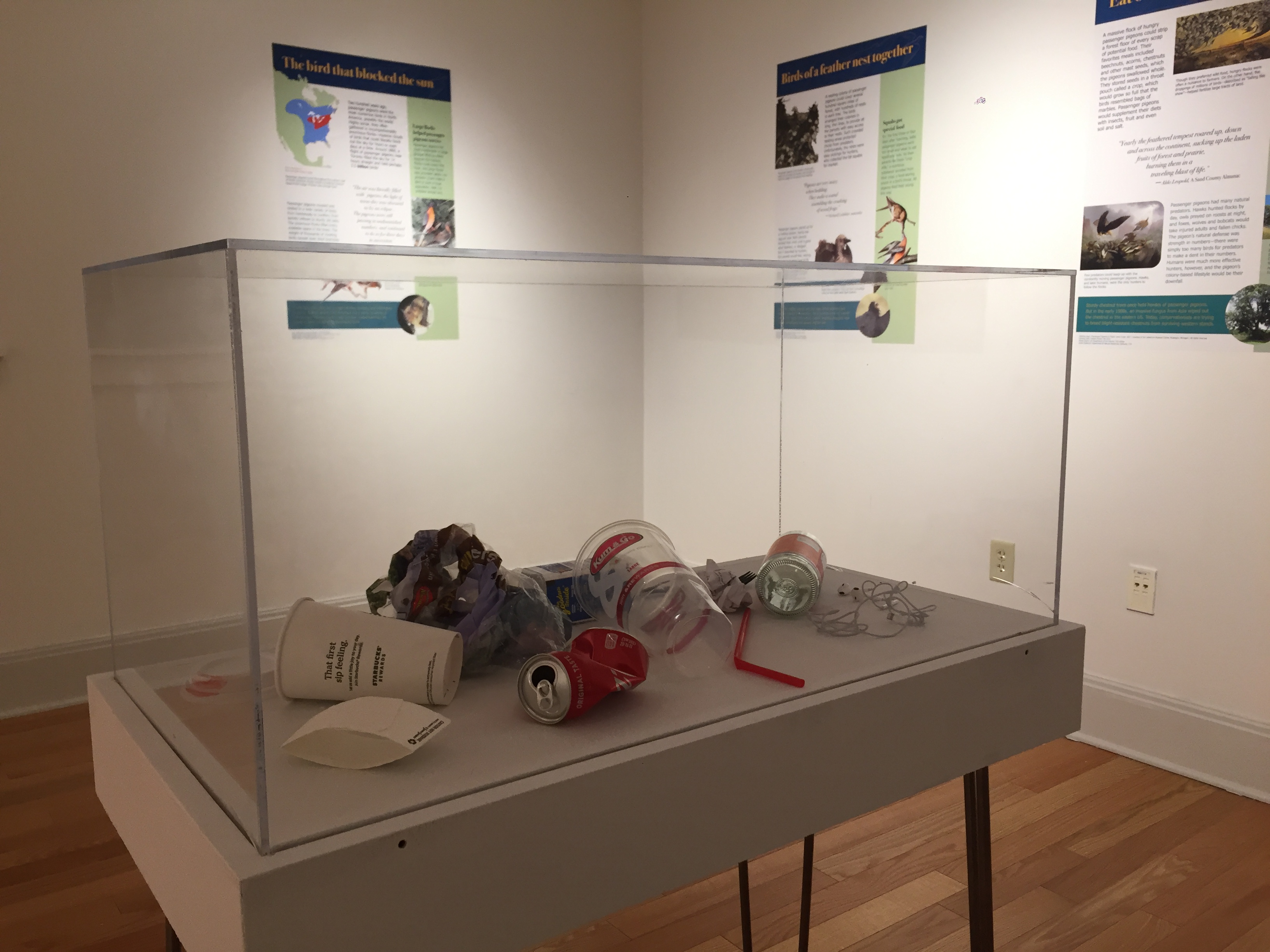College of Liberal Arts & Sciences
The Demise of Bird Populations: Past and Future

The UI Office of Sustainability and the Environment (OSE) is delighted to announce our addition to the very special Project Passenger Pigeon exhibit at the Old Capitol Museum: trash.
Further illustrating the effects of human impact on both historical and present-day bird species, our team has put together some displays for the exhibit, which explores the lives, deaths, and conditions surrounding the ultimate extinction of the passenger pigeon — a species once numbering in the billions in the United States.
“We hope to convey the message that humans caused the extinction of passenger pigeons, but that’s not an isolated situation,” says OSE Program Manager Blake Rupe, “Humans are causing the slow extinction of other bird species today – this isn’t something that only happened in the past. Even though we can’t do anything to bring back passenger pigeons, we can recognize that we are causing issues to bird populations today.”
Birds today face even more threats than the threats we have already identified as cause for extinction.
Amongst the worst? Plastic waste.
When ingested, our garbage can be deadly for birds. An average person throws away 200 pounds of plastic every year, and new studies show that 90 percent of birds have eaten plastic pieces like bags, balloons, and bottle caps.
UI Pentacrest Museums Communications Coordinator Jessica Smith is excited about this interdisciplinary collaboration.
“The exhibit expansion by our friends at OSE gives the museum an opportunity to be specific in tying together the facts surrounding the extinction of the passenger pigeon with the “so what” part of the story,” Smith says. “This exhibit is topical, relevant, and not to miss.”
Guests may visit the exhibit through the end of December 2019 at the Old Capitol Museum during regular open hours, enjoying the always-free admission. Catch the esteemed Connie Mutel during her talk on Climate Evolution in conjunction with the exhibit, November 12 at the Old Capitol Museum.